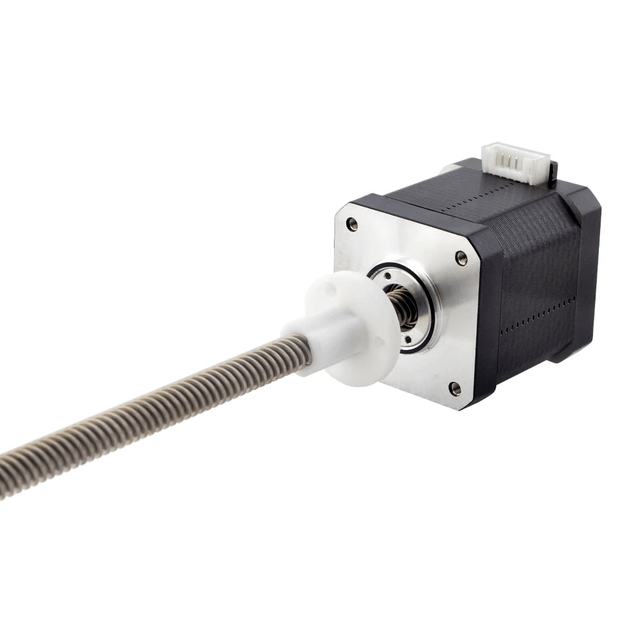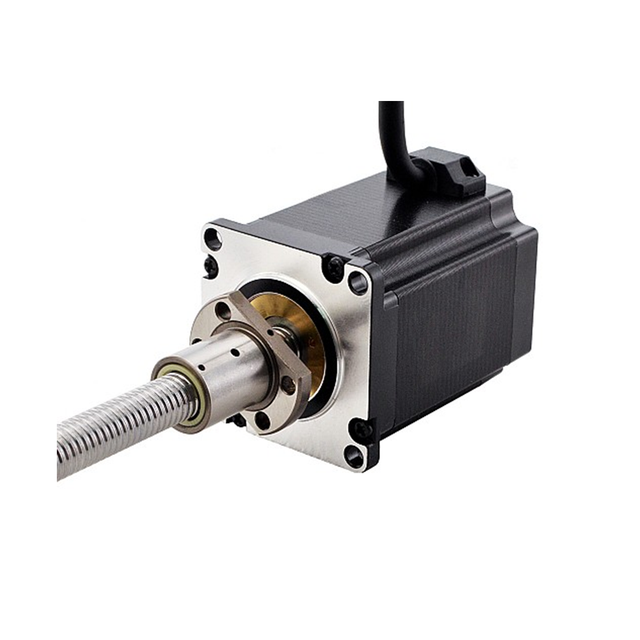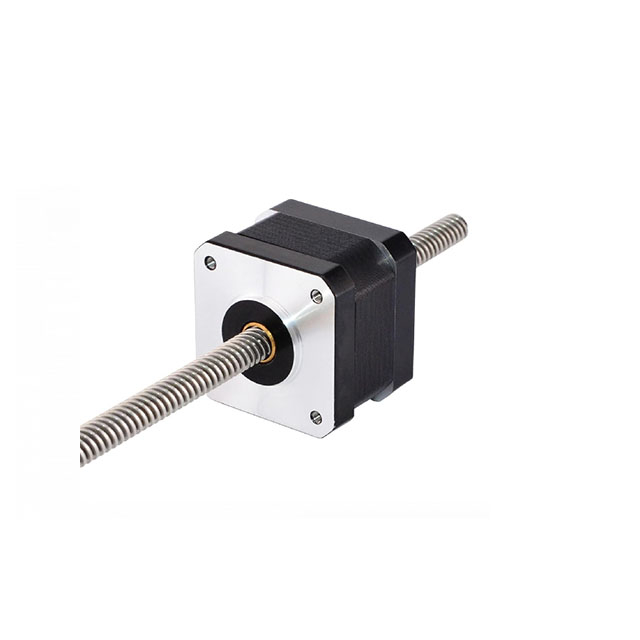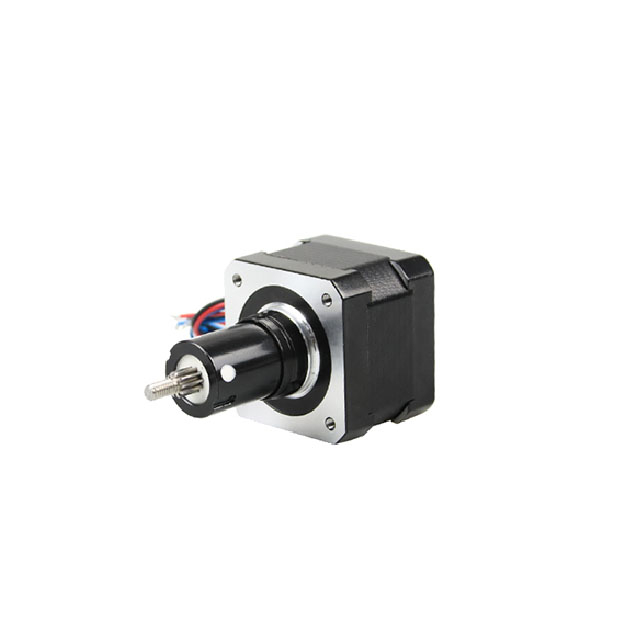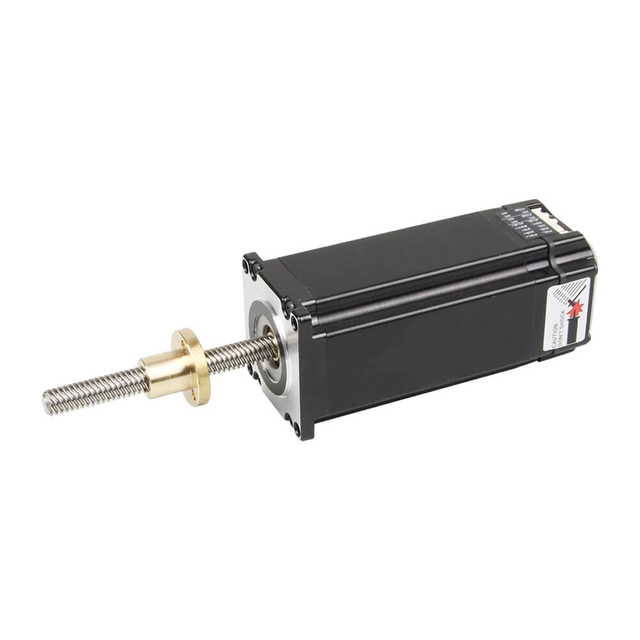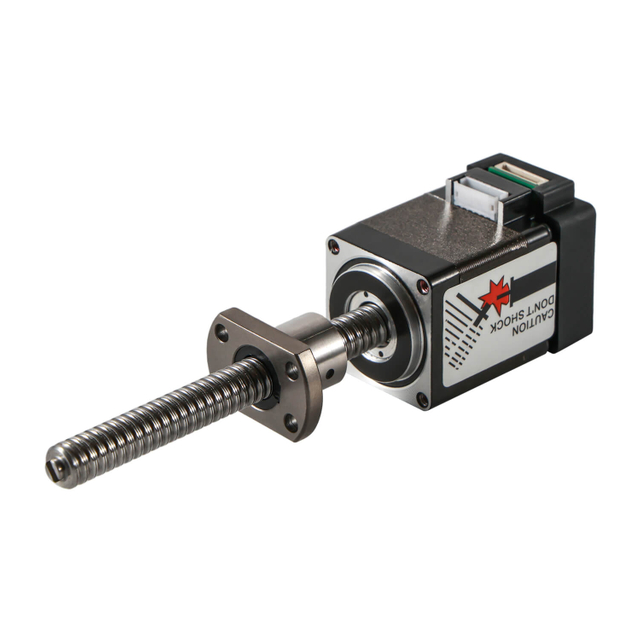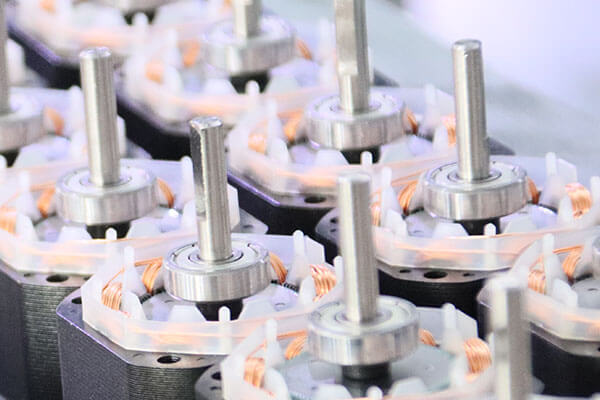
Ball screws are among the most critical components in precision motion systems, delivering exceptionally smooth, accurate, and repeatable linear movement. When engineers evaluate any ball screw system—whether for CNC machinery, industrial automation, robotics, semiconductor equipment, or precision positioning—the question “How fast can a ball screw move?” becomes central to system performance, efficiency, and reliability.
In this comprehensive guide, we explore the speed capabilities, performance factors, limitations, engineering considerations, and practical calculations that determine ball screw linear speed. This detailed analysis provides both foundational understanding and real-world application insights for high-speed precision engineering.
Understanding Ball Screw Speed Fundamentals
Ball screw speed is governed by a combination of mechanical geometry, rotational capability, and dynamic stability. To accurately determine how fast a ball screw can move, it is essential to understand the two core parameters: rotational speed (RPM) and lead (mm per revolution). Together, these define the maximum achievable linear velocity.
At its simplest level, ball screw linear speed is calculated as:
Linear Speed (mm/min) = Screw RPM × Lead (mm/rev)
This equation highlights how increasing either the rotational speed or the lead directly increases linear travel. For example, a ball screw with a 10 mm lead rotating at 3000 RPM will produce:
30,000 mm/min (30 m/min) of linear movement.
However, theoretical speed is only the starting point. Actual allowable speed depends on several physical and design constraints.
Critical Speed: The Main Rotational Limitation
Every ball screw has a critical speed, which is the maximum rotational speed it can safely operate without entering a condition known as “whip” — a lateral vibration that can cause instability, noise, premature wear, and potential failure. Critical speed is influenced by:
In general:
Larger diameters → higher critical speed
Shorter lengths → higher critical speed
Fixed–Fixed support → highest safe RPM
Critical speed is often the primary constraint that limits high-speed motion in long-travel applications.
The Role of Lead in Speed Capability
The lead of a ball screw—how far the nut moves per one revolution—is a key factor in determining maximum linear speed. High-lead ball screws (20–50 mm/rev) can achieve high linear speeds even if rotational speed is limited by critical speed.
For instance, at the same RPM:
| Lead (mm/rev) | Linear Speed at 3000 RPM (m/min) |
| 5 mm | 15 m/min |
| 10 mm | 30 m/min |
| 20 mm | 60 m/min |
| 32 mm | 96 m/min |
This makes high-lead designs ideal for rapid traverse or high-speed automation applications where quick positioning is essential.
Other Parameters That Influence Speed
While RPM and lead define theoretical movement, actual performance depends on additional engineering factors, including:
1. Ball Return System
Nut design plays a major role in how smoothly balls recirculate at high speed:
End-cap return systems enable the highest speeds
Internal deflector systems support moderate speeds
Tube return systems are cheaper but noisier and slower
2. Lubrication Quality
Insufficient lubrication increases heat and friction, reducing allowable speed and shortening lifespan. High-speed systems often require:
3. Preload Level
Preload increases rigidity but also increases friction and heat generation.
Putting It All Together
Understanding ball screw speed fundamentals means balancing:
When these are carefully engineered, ball screws can deliver smooth, precise, and extremely fast linear motion, often exceeding 100 m/min in optimized high-speed systems.
Critical Speed: The Most Important Limiting Factor
Among all performance metrics that define how fast a ball screw can move, critical speed stands as the single most important limiting factor. Critical speed determines the maximum rotational velocity a ball screw shaft can sustain before it begins to experience instability in the form of whip, a dangerous bending vibration that can lead to noise, loss of accuracy, accelerated wear, or even catastrophic failure. Understanding and correctly applying critical speed calculations is essential for designing a reliable high-speed linear motion system.
What Is Critical Speed?
Critical speed is the rotational speed at which a ball screw resonates laterally due to its own natural frequency. When the screw approaches this resonant frequency, it begins to oscillate or “whip.” This phenomenon:
Reduces positional accuracy
Introduces significant vibration
Increases friction and heat
Damages bearings and nut assemblies
Can cause permanent screw deformation
To maintain system stability, ball screws must operate well below their critical speed—typically at 80% or less of the calculated value.
Key Factors That Determine Critical Speed
Critical speed is governed by the mechanical characteristics of the ball screw assembly. The most influential factors include:
1. Screw Diameter
The diameter of the shaft has a direct effect on stiffness.
For this reason, high-speed applications often use large-diameter screws, even when load requirements are modest.
2. Unsupported Length
The distance between bearing supports is a major determinant of screw stability.
Shorter unsupported lengths dramatically increase critical speed
Long travel distances reduce the safe RPM limit
Systems with long strokes must either accept lower speed or use reinforced support methods
Just doubling the unsupported length can cut the allowable critical speed by more than half.
3. Bearing Support Configuration
How the ends of the ball screw are supported strongly affects its rigidity. There are four common support configurations:
| Support Type | Rigidity | Max RPM | Notes |
| Fixed–Free | Low | Lowest | Simple, least suitable for high speed |
| Supported–Supported | Medium | Moderate | Both ends supported, better stability |
| Fixed–Supported | High | High | Very stable, ideal for fast systems |
| Fixed–Fixed | Very High | Highest | Maximum performance and precision |
A Fixed–Fixed arrangement can more than double the safe critical speed when compared to a Fixed–Free setup.
4. Material and Manufacturing Quality
High-performance ball screws are manufactured using premium materials and precision grinding.
These enhancements improve:
The result is a higher usable rotational speed without risking whip or oscillation.
Calculating Critical Speed: Why It Matters
Engineering teams typically use standardized formulas to calculate the theoretical critical speed, but it is always recommended to apply a safety factor. Most manufacturers advise operating at no more than 80% of the theoretical limit. For high-speed, high-duty-cycle applications, a more conservative 70% limit is preferred.
Example: Effect of Diameter and Length
Assume a 16 mm screw and a 20 mm screw, both with equal unsupported lengths.
The 20 mm screw can safely rotate 40–60% faster than the 16 mm screw
But if the screw length doubles, both lose more than half their allowable RPM
This means high-speed systems often require large-diameter, short-length ball screws with fixed–fixed end supports
These principles apply across industries including CNC machining, electronics automation, and robotics.
Consequences of Exceeding Critical Speed
Operating beyond critical speed can produce severe mechanical problems, such as:
Excessive vibration and noise
Reduced positioning accuracy
Premature bearing wear
Damage to nut return systems
Bending or permanent deformation of the shaft
For safety and performance, the system should always include monitoring and control strategies to avoid running near resonance.
Conclusion
Critical speed is the defining factor in determining the safe and realistic rotational speed of any ball screw system. By optimizing screw diameter, minimizing unsupported length, selecting the right bearing support configuration, and using high-quality manufacturing processes, engineers can significantly increase allowable speeds while maintaining stability and reliability. Understanding and respecting critical speed limits is fundamental to achieving high-performance linear motion without compromising system life or precision.
How Screw Lead Affects Maximum Speed
The lead determines how much linear travel occurs per revolution. Higher lead values enable higher linear speeds without increasing RPM.
Common leads: 5 mm, 10 mm, 20 mm, 32 mm, even 50 mm for ultra-high-speed systems.
Example speed comparisons at 3000 RPM:
| Lead (mm/rev) | Linear Speed (m/min) |
| 5 mm | 15 m/min |
| 10 mm | 30 m/min |
| 20 mm | 60 m/min |
| 32 mm | 96 m/min |
High-lead ball screws (20–50 mm) are used in applications requiring fast traverse speeds with moderate force.
Real-World Maximum Linear Speed of Ball Screws
Different industries implement ball screws at various speed ranges:
Standard Industrial Machinery
Typical speed: 20–40 m/min
Applications: CNC mills, packaging equipment, automation nodes
High-Speed CNC & Robotics
Ultra-High-Speed Semiconductor & Medical Equipment
Speed range: 80–120 m/min
Short screw lengths, low-mass nuts, high-precision supports
Theoretical Limits
Some specialized systems using hybrid ball screws have achieved speeds above 150 m/min, but this is uncommon and requires highly optimized engineering controls.
Acceleration and Deceleration Performance
Speed is only part of the equation—high accelerations are critical for dynamic motion:
Standard ball screws: 0.2–0.5 G
High-performance ball screws: 1.0–1.5 G
Ultra-high-speed specialty systems: up to 3 G
Acceleration capability depends on:
Nut mass
Screw inertia
Drive motor torque
Bearing stiffness
System rigidity
High acceleration requires high stiffness and superb vibration control.
Factors That Limit Ball Screw Maximum Speed
1. Thermal Expansion and Heat Generation
High speeds produce friction heat in:
Ball tracks
Nut body
Bearings
Motor coupling
Excess heat can cause:
Dimensional changes
Lubrication failure
Increased backlash
Reduced life expectancy
Thermal compensation and cooling mechanisms are often required above 60–80 m/min.
2. Preload and Friction
Higher preload increases stiffness but also increases frictional heat and reduces maximum speed.
Typical preload categories:
Light preload (2–3%) → highest speed
Medium preload (5%) → balanced performance
Heavy preload (8–10%) → lower speed, highest rigidity
3. Lubrication Quality
High-speed systems require:
Poor lubrication reduces speed limits by up to 40%.
4. Nut Design and Ball Return System
Ball return architecture directly influences maximum speed.
Return system types:
Internal deflector → good for high speed
End cap return → highest speed capacity
Tube return → moderate speed, lower cost
High-speed nuts typically use end-cap return for smooth recirculation at high RPM.
5. Bearing Support Configuration
End supports have dramatic effects on allowable RPM.
Common configurations:
Fixed–Free → lowest speed
Fixed–Supported → moderate speed
Supported–Supported → high speed
Fixed–Fixed → highest critical speed
A properly engineered bearing arrangement can double the safe rotational speed.
How to Increase Ball Screw Speed Safely
Achieving higher operating speeds in ball screw systems requires thoughtful engineering, careful component selection, and strategic design enhancements. While ball screws are capable of extremely fast, precise linear motion, pushing them beyond safe operating limits can lead to premature wear, instability, or catastrophic mechanical failure. The following methods outline the most effective and proven ways to safely increase ball screw speed while maintaining performance, accuracy, and long-term reliability.
1. Increase the Screw Diameter
One of the most effective ways to safely raise maximum speed is to select a larger screw diameter. A thicker shaft provides greater rigidity, reducing the likelihood of whip and raising the critical speed significantly.
Benefits of larger diameters:
Higher stiffness and stability
Increased critical speed
Better resistance to vibration
Improved load-carrying capability
This is especially beneficial in high-travel or high-acceleration applications.
2. Reduce Unsupported Shaft Length
The length of the ball screw between support bearings has a dramatic impact on critical speed. The longer the distance between supports, the more susceptible the screw becomes to bending and whip.
Ways to reduce unsupported length include:
Reconfiguring the system layout
Relocating support bearings closer together
Using additional intermediate supports
Positioning servo motors to reduce cantilevered distances
Shorter unsupported lengths consistently allow higher rotational speeds.
3. Upgrade Bearing Support Configuration
Switching to a higher-stiffness support configuration can increase safe RPM considerably. Among all bearing arrangements, Fixed–Fixed provides the highest rigidity and the greatest increase in critical speed.
Support configuration ranking (from lowest to highest speed capability):
Fixed–Free
Supported–Supported
Fixed–Supported
Fixed–Fixed
Upgrading to a Fixed–Fixed arrangement can raise critical speed by up to 200%, allowing faster and more stable operation.
4. Select a Higher Lead Ball Screw
Increasing the lead (mm of travel per revolution) is one of the simplest and most effective ways to safely achieve higher linear speed without increasing RPM.
For example, increasing lead from 10 mm to 20 mm instantly doubles linear speed at the same rotational speed.
Advantages of high-lead screws:
High-lead ball screws are commonly used in high-speed CNC machines, packaging equipment, and rapid-traverse automation.
5. Use High-Speed Ball Nut Designs
Not all ball nuts are designed for high RPM. The ball return system plays a major role in how quickly the balls can recirculate without jamming, overheating, or generating excessive noise.
Best nut designs for high-speed operation:
End-cap return systems → highest speed capability
Internal deflector systems → good speed, quiet
Tube return systems → lower speed, lower cost
For ultra-high-speed applications, end-cap return systems offer the smoothest and most reliable recirculation at elevated RPM levels.
6. Improve Lubrication and Cooling
High-speed ball screw operation generates heat from friction and recirculation forces. Proper lubrication dramatically reduces wear and improves performance at elevated speeds.
Recommended lubrication methods:
Oil–air lubrication for extremely high RPM
Automatic lubrication systems for consistent film thickness
High-performance synthetic greases for reduced friction
For the highest-speed applications, thermal management enhancements such as air cooling, oil cooling, or heat sinks may be necessary to maintain dimensional stability.
7. Reduce Preload When Possible
While preload increases system stiffness and minimizes backlash, it also raises friction and heat, limiting maximum safe speed.
Light to medium preloads are ideal for high-speed applications.
Heavy preload should only be used when high stiffness is essential, and only with advanced cooling and lubrication systems.
8. Use Balanced and Precision-Ground Screws
Precision-ground ball screws have superior straightness, roundness, and surface quality compared to rolled screws. These characteristics minimize vibration, reduce heat, and increase allowable RPM.
Benefits include:
Dynamic balancing of the screw further enhances high-speed capability.
9. Optimize Motor Selection and Drive Tuning
Servo motors and drives must be properly matched to the ball screw to avoid harmful oscillations or overspeed conditions.
Key considerations include:
Proper tuning reduces mechanical stress and enables safer operation at higher speeds.
10. Consider Alternative Technologies for Ultra-High Speeds
In applications requiring speeds above 120–150 m/min, even optimized ball screws may reach their physical limitations. When this occurs, switching to linear motors or belt-driven actuators may provide necessary performance without risk.
Conclusion
Safely increasing ball screw speed requires a strategic approach that balances mechanical stiffness, thermal management, nut design, lubrication quality, and system tuning. By selecting the right combination of larger diameter screws, shorter unsupported lengths, high-stiffness bearing configurations, high-lead pitch, and optimized lubrication systems, engineers can significantly enhance speed without sacrificing accuracy, reliability, or service life. With these methods, ball screw systems can confidently operate in the high-speed ranges demanded by modern CNC machines, automation lines, and precision robotics.
Ball Screw Speed vs. Load Capacity
Ball screws face a trade-off:
This is due to ball dynamics, contact stress, and thermal effects.
In general:
Selecting the optimal screw requires evaluating:
Required thrust
Duty cycle
Travel length
Motion profile
Ambient temperature
Expected Lifespan at High Speed
Ball screw life depends on:
Load factor
Operating speed
Lubrication performance
Preload level
Contamination control
At moderate speeds, ball screws last 10,000–20,000 hours.
At high speeds, life may reduce to 5,000–8,000 hours unless upgraded lubrication and cooling are used.
Conclusion: How Fast Can a Ball Screw Really Move?
High-quality ball screws can reach speeds between:
30–60 m/min → standard industrial use
60–100 m/min → high-speed CNC, robotics
100–150 m/min → specialized ultra-high-speed systems
Ultimately, achievable ball screw speed depends on:
Critical speed
Lead selection
Nut design
Bearing support
Lubrication method
System rigidity
With proper engineering, ball screws can deliver extremely fast, precise, and reliable linear motion suitable for modern high-performance applications.
English
العربية
Français
Русский
Español
Português
Deutsch
italiano
日本語
한국어
Nederlands
Tiếng Việt
ไทย
Polski
Türkçe
ພາສາລາວ
ភាសាខ្មែរ
Bahasa Melayu
ဗမာစာ
Filipino
Bahasa Indonesia
magyar
Română
Čeština
Монгол
қазақ
Српски
हिन्दी
فارسی
Slovenčina
Slovenščina
Norsk
Svenska
українська
Ελληνικά
Suomi
Հայերեն
עברית
Latine
Dansk
Shqip
বাংলা
Hrvatski
Afrikaans
Gaeilge
Eesti keel
Oʻzbekcha
latviešu
Azərbaycan dili
Български
Català


